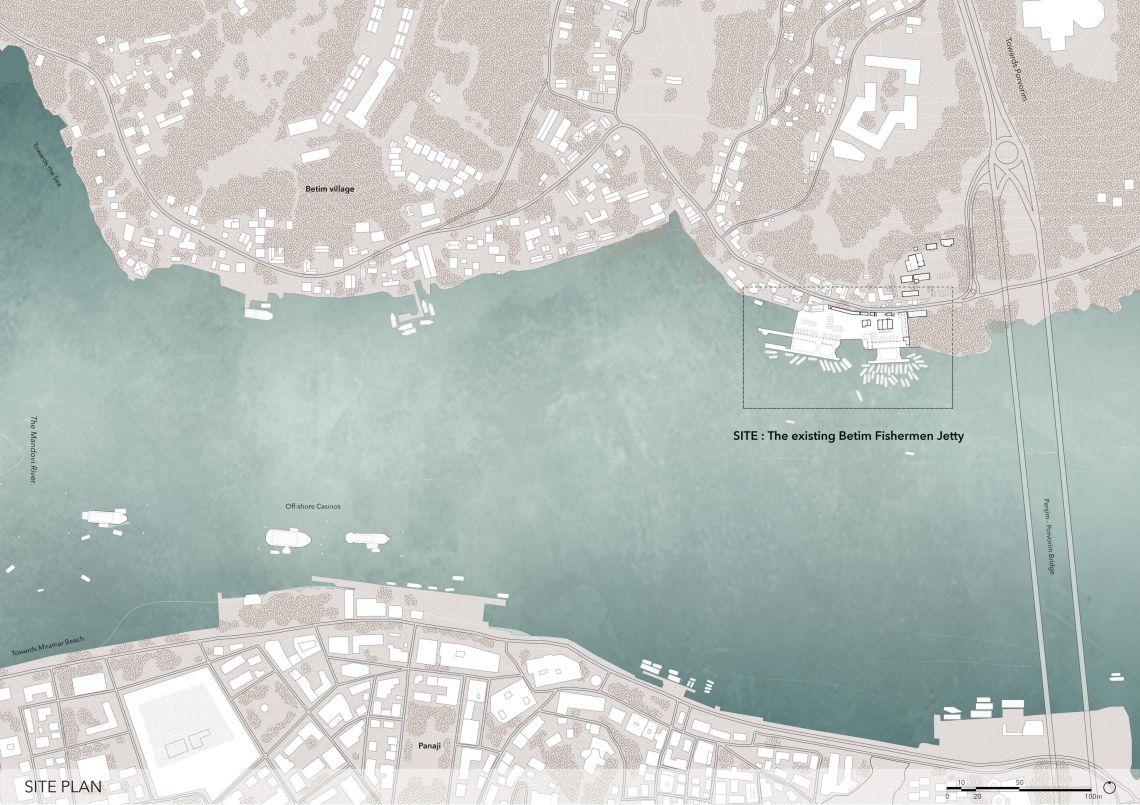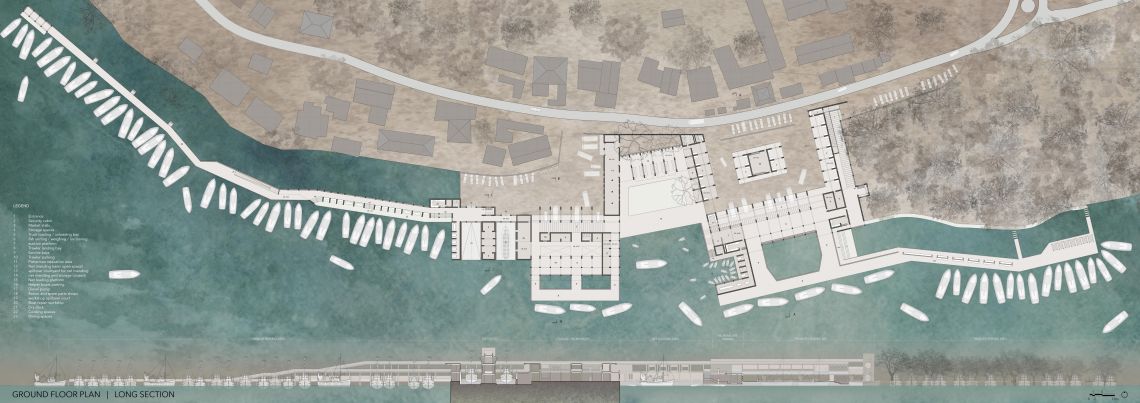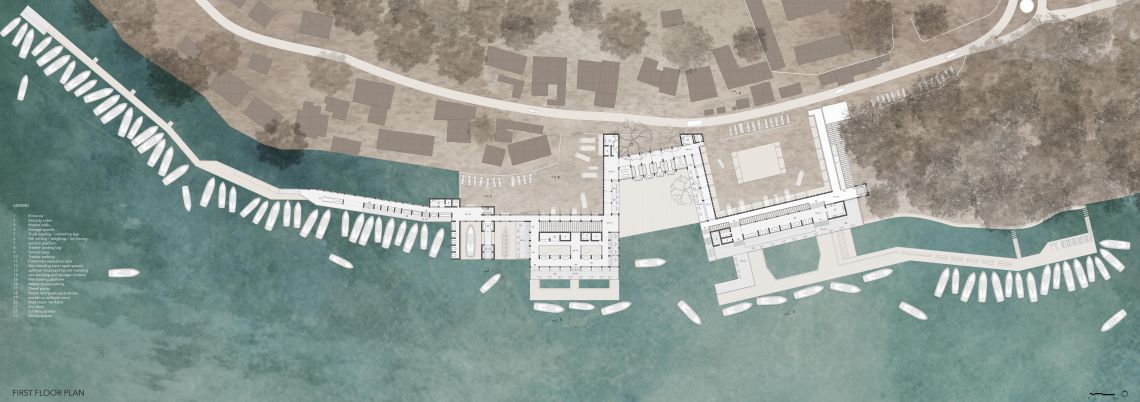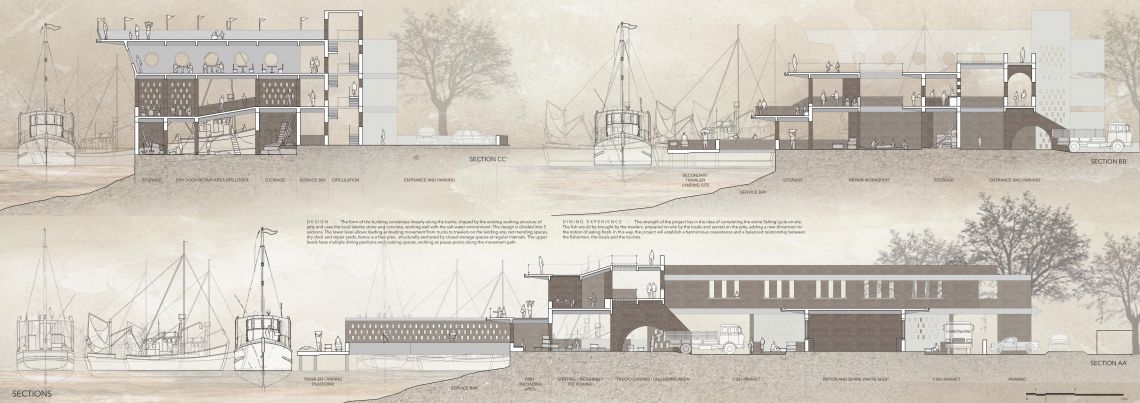Your browser is out-of-date!
For a richer surfing experience on our website, please update your browser. Update my browser now!
For a richer surfing experience on our website, please update your browser. Update my browser now!
The Betim Fishermen Jetty and Cooperative can be located beside a dense cluster of busy trawlers on the Mandovi estuary, under the Panjim-Porvorim bridge, Goa. What used to be a high functioning fishing jetty with 150 trawlers, a chaotic fish market and a family of supporting economies (net mending sheds and gear shops) scattered in this fishing village, is right now ‘fitting-out’ in its context of luxury resorts and off-shore casinos dotted on and along the Mandovi. This gradual encroachment has led to many fishermen shifting to the tourism sector to make up for the fall in income and inability to survive the competition, and has caused many such social and economic issues. Right now the site has lost its rigor in functioning, with the western half of the site bought by Deltin Royale) The challenge for the fishermen right now is to survive in this competition with the tourism sector. The project builds around the idea to restore this dynamic, energetic character and functioning of the Mandovi jetty, by adding a layer of reinforcement, in the form of a series of dining decks run by the local fishermen and their families, as an extension to the same cooperative. This diversion would run parallel to the fishing activity on the jetty, with controlled overlap in the movement patterns of both these diverse functions, complementing the working of both. The form of the building condenses linearly along the banks, shaped by the existing working structure of jetty and uses the local laterite stone and concrete, working well with the salt water environment. The design is divided into 3 sections. The lower level allows loading-unloading movement from trucks to trawlers on the landing site, net mending spaces, dry dock and repair yards, hence is a free plan, structurally anchored by closed storage spaces at regular intervals. The upper levels have multiple dining pavilions and cooking spaces, working as pause points along the movement path. The strength of the project lies in the idea of completing the entire fishing cycle on site. The fish would be brought by the trawlers, prepared on-site by the locals and served on the jetty, adding a new dimension to the notion of eating fresh. In this way, the project will establish a harmonious coexistence and a balanced relationship between the fishermen, the locals and the tourists. The building aims to set an example for the many marginalized fishing communities in Goa







